Mantua, Palazzo Te opens exhibition dedicated to Rubens. Seventeen works by the artist on display.
From October 7, 2023 to January 7, 2024, Palazzo Te in Mantua hosts the exhibition Rubens at Palazzo Te. Painting, Transformation and Freedom, curated by Raffaella Morselli in collaboration with Cecilia Paolini. The exhibition is part of the project Rubens! The Birth of a European Painting, born out of the collaboration with Palazzo Ducale in Mantua and Galleria Borghese in Rome, and aims to investigate the work of Flemish-born artist Pieter Paul Rubens (Siegen 1577 - Antwerp 1640), the absolute protagonist and archetype of the Baroque who, mixing Renaissance and myth, elaborated a new figurative language. Trained in Flanders on texts and images from the Latin and Greek classics, the painter found in Mantua the perfect place to immerse himself in the ancient world: the imaginative population of gods and ancient texts invented and quoted by Giulio Romano at Palazzo Te in fact became a great source of inspiration for him.
The exhibition itinerary divided into twelve sections brings together a total of fifty-two works, seventeen of which were created by Rubens, selected according to the dialogue they re-establish with the myths and with the interpretation Giulio Romano gave of them in the various rooms with the intention of creating a correspondence between the works of the Flemish painter and the decorative and iconographic motifs present at Palazzo Te; the exhibition makes use of loans from international museums, such as the Louvre, the Prado, the Boijmans Museum in Rotterdam, the National Gallery of Denmark, the Capitoline Museums in Rome and the Royal Museums in Turin. The aim is to show how much the Renaissance suggestions elaborated in the Mantuan and Italian years continued, evolving, in the painting of his maturity, until they were transmitted in theintellectual and artistic legacy left to his pupils.
Rubens’ admiration for Giulio Romano’s creativity lies in the progressive gigantism that his art assumed after his study of the decorations in the Mantuan palaces. Indeed, it seems that the master used to appropriate Giulio Romano’s drawings, or copies by his assistants, to use them as models, then retouching them according to his method of study: this is the case with some drawings taken from the series of the Triumph of a Roman Emperor lent by the Louvre, in which Giulio Romano’s drawing invention at Palazzo Te in the Chamber of the Stuccoes is grafted to the master’s intervention. A gigantism also typical of the inventions of Jacob Jordaens, Rubens’s companion-who, having never been to Italy, knew precisely from the “Giulioesque” drawings of his colleague the imaginative richness of Mantua, in which a direct reference to Giulio Romano is traced by juxtaposing the Satyr playing the flute from Bilbao with the Polyphemus on the east wall. A great suggestion comes to the artist from his knowledge of Roman culture, which Rubens considers a moral lesson prodromal to the advent of Catholicism. Moral virtue as well as imperturbability in the face of historical events characterize, in the master’s works, the figures most inspired by Mantuan wall decorations. In this regard, the exhibition includes a series of works in which Rubens interprets the figure of Achilles, an emblem of the heroism of the human being, as theAchilles discovered by Odysseus among the daughters of Lycomedes in the Prado, in which the reference to what was seen at Palazzo Te clearly emerges in the pose of the maiden seated from behind in the foreground, which is the same as one present in the Rustic Banquet in the Hall of Psyche. A novel aspect illustrated in the exhibition is then thepsychological introspection of the portrait: the comparison between the Portrait of Bartolomeo Cesi and the Lady of the Licnids allows the audience to approach and understand in depth Rubens’ understanding of the so-called “talking portrait.” One wonders whether Rubens is to be considered Flemish or Italian-a question now outdated because Rubens is the universal new man who transcends religious, geographical and political boundaries to invent a new language that is, to all intents and purposes, international.
“Rubens’ gaze on Palazzo Te is the basis of a beautiful exhibition, the result of a complex and ambitious scientific and institutional journey,” commented the director of the Fondazione Palazzo Te, Stefano Baia Curioni. “It is the story of the reverberation had over time, up to the seventeenth century and beyond, by the painting of Giulio Romano and Palazzo Te; it is a story that connects Giulio Romano to Rubens in their ability to creatively transform tradition; it is the evidence of how much the ’practice of freedom’ proper to painting is a precious figure of European culture, even contemporary.”
Also renewed for this exhibition is the collaboration with Factum Foundation, which for the occasion has created a 3-D reproduction of the altarpiece Saints Gregory, Domitilla, Maurus, Papia, Nereo and Achilleo in adoration of the Madonna of Vallicella (Grenoble, Municipal Museum), proposed by Rubens to Vincenzo I Gonzaga and yet never purchased by him.
Promoted by the City of Mantua, produced and organized by Palazzo Te, with the contribution of Fondazione Banca Agricola Mantovana, in collaboration with Factum Foundation and Phoebus Foundation, with the support of Amici di Palazzo Te and Musei Mantovani, with the technical support of Aermec, and in synergy with Mantova città d’arte e di cultura, the exhibition is the concluding event of the 2023 exhibition season of Fondazione Palazzo Te Mantova: Europe of Cities dedicated to the theme of Europe as a cultural and artistic homeland capable of guarding the value of freedom. The installation, lighting and graphic design in the exhibition was entrusted to Paolo Bertoncini Sabatini, and the graphic design to Francesca Pavese. Catalog published by Marsilio Arte.
For info: https://www.centropalazzote.it/
Hours: Wednesday through Monday from 9 a.m. to 6:30 p.m. From Nov. 2, 2023, Wednesday through Monday from 9 a.m. to 7:30 p.m. Closed Tuesdays.
Photo by Gian Maria Pontiroli © Fondazione Palazzo Te.
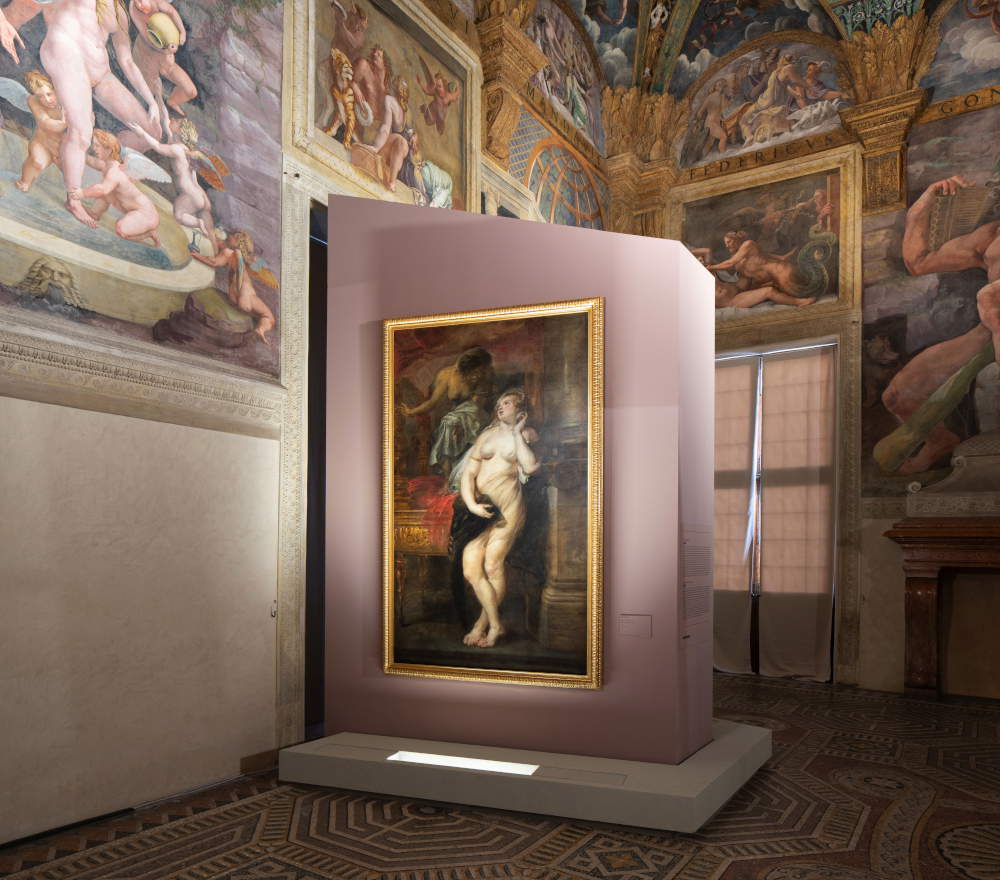
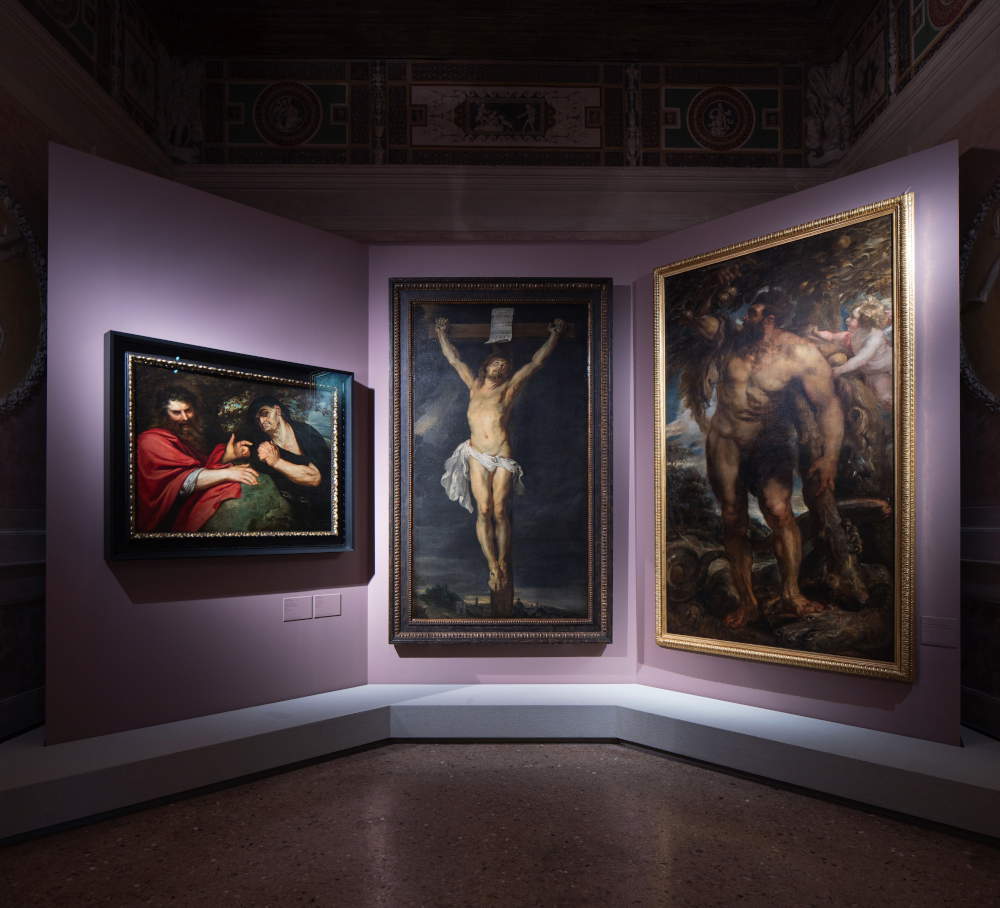
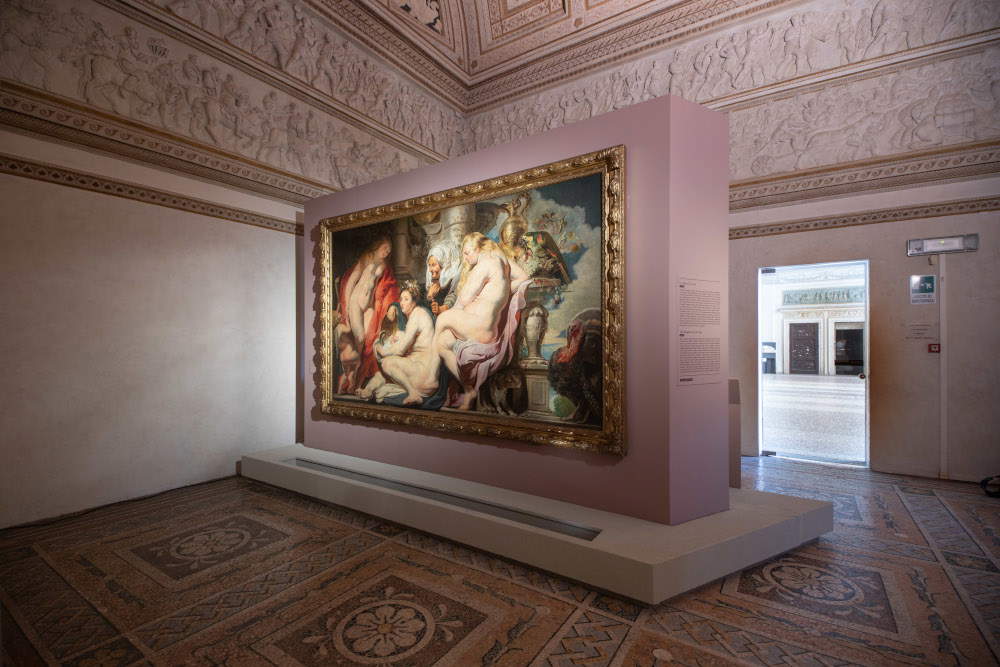
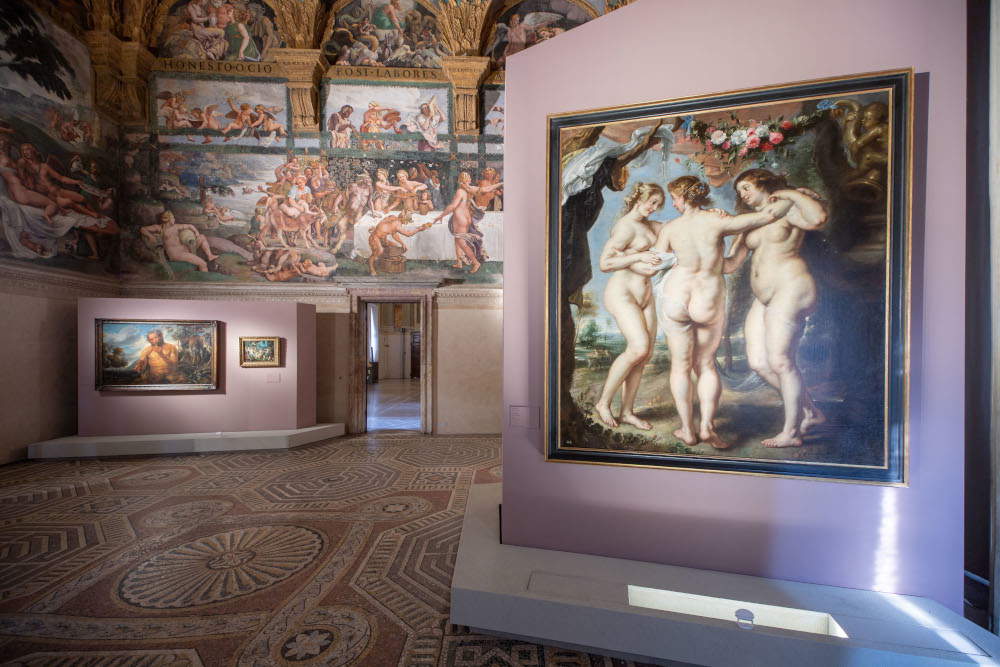 Exhibition layout
Exhibition layout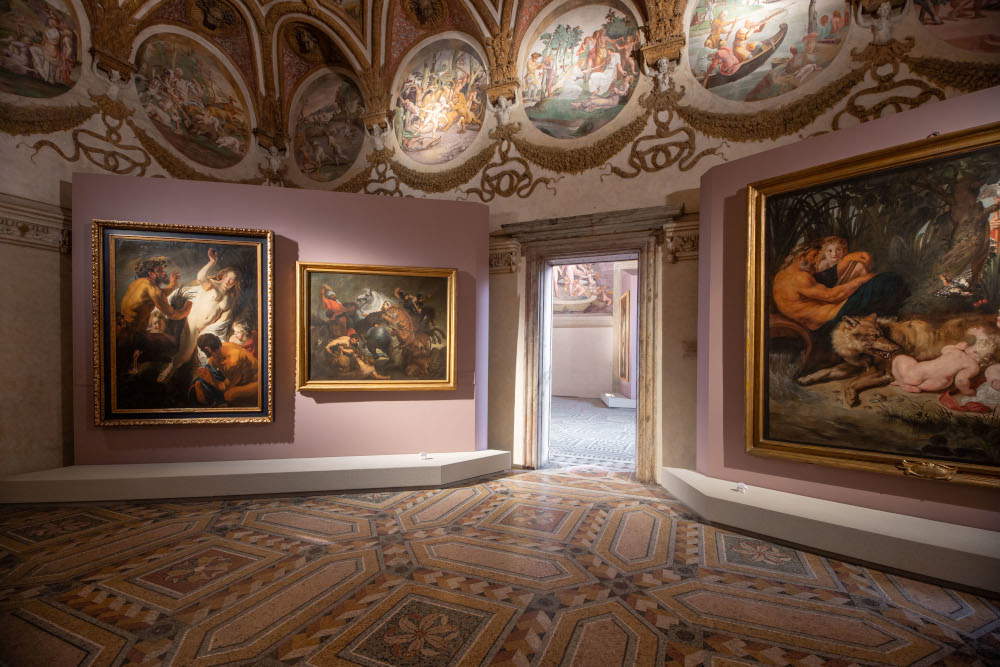 Exhibition layout
Exhibition layout
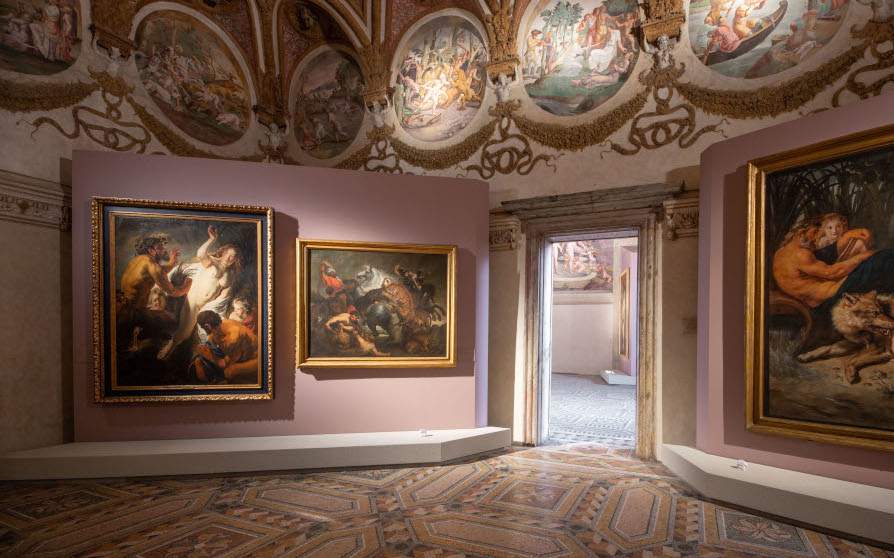 |
| Mantua, Palazzo Te opens exhibition dedicated to Rubens. Seventeen works by the artist on display. |
Warning: the translation into English of the original Italian article was created using automatic tools. We undertake to review all articles, but we do not guarantee the total absence of inaccuracies in the translation due to the program. You can find the original by clicking on the ITA button. If you find any mistake,please contact us.





























